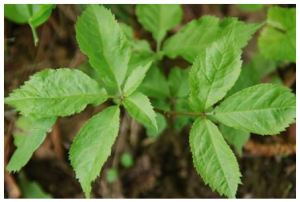Although, there may be nothing French about it....
About 6 years ago I was introduced to this modest little bakery in Long Island called Malverne Pastry. This was a wonderful thing when I was living nearby and had a car. I would make a weekly jaunt over there for a sublime little pastry called "French Apple Tart." The first time this crossed my palate, I turned giddy with ecstasy. Light puff pastry with a thin layer of tart, thinly sliced green apples (skins on!) and a very faint, nearly undetectable flavor of almond. Not too sweet and just flaky enough to melt in your mouth but crisp enough so you could also hold it in your hand. This was my one weakness for many years. After we moved further away from the pastry shop, but closer to the city, I would still find a way to make it to the pastry shop a couple times a year...even though I'd have to rent a car to do it.
One day late this past August, having received a bumper crop of Bartlett pears with a fruit share in my CSA, I decided to try my hand at making my own. (Thanks, most certainly to the generosity of an generous friend of mine who gave me her share of pears!) It was a smashing success! Instead of using hydrogenated-oil filled puff pastry (I haven't mastered the delicate are of making my own yet) I used an organic fillo dough, layered with butter, as the crust. The result was a crispy flaky heavenly pastry.
Here is the recipe. I will try it with apples as soon as they are here.
Preheat oven to 400.
1 package organic filo dough, thawed
1 tube of Almond paste (rolled out as thin as possible, the size of your cookie sheet)
1/2 cup softened butter (you may not need it all)**
2 tbs apricot jam, warmed with a little honey (approx. 1 Tb.), or apple juice and a splash of cognac or brandy.
1 cookie sheet lined with natural parchment
4 - 5 bartlett pears, not too ripe, or tart firm apples, cored and sliced very thin (1/16 in.) You want them to be like thick potato chips.
1/8 tsp. cinnamon powder to toss with the sliced apples.
** note on the butter: if you have a pastry brush, melt the butter and brush it on. I don't, so I spread softened butter instead.
Carefully, on a tea towel, unroll the package of filo. (Aha! just like it says on the package...they do know what they are talking about.) Place your parchment on top the cookie sheet and spread a little butter over it. Then, begin layering your filo, a couple sheets at a time, spreading (or brushing) butter between each layer.
After you have layered your final sheet of filo, now it's time for the almond paste. You'll want to place it between two pieces of parchment or waxed paper and roll it out as think as possible. (I can't give you any hints on this procedure really, because I am still struggling with this bit. If anyone else knows how to get a thin coat of almond paste onto a thin, fragile pastry, please let me know.) I can never get it as thin as I'd like, so I tear off tiny pieces and place them over the top of the filo. Now for the art- carefully layer all of your fruit over the top. When you are satisfied with the appearance of your tart, fold over the raggedy edges of your tart so they look like the picture below. This keeps them from burning too much. (Stick them down with a little bit of butter, used like glue. Finally, in a small pan, gently warm your jam, honey and cognac until they are runny. Add a little water if need be. Brush your entire pastry, crust and all, with a very fine layer the jam. Bake for about 20 -25 min, depending on how robust your oven's heating mechanism is. The crust should be a nice golden color on the bottom and never fear, my edges do sometimes get a little dark, but it still tastes delicious! After you remove it from the oven, carefully cut yourself a slice and sit down with a nice cup of something warm, put up your feet and relax...dream...and think up your next project.
With Love, and Autumn Blessings~
Carey






















